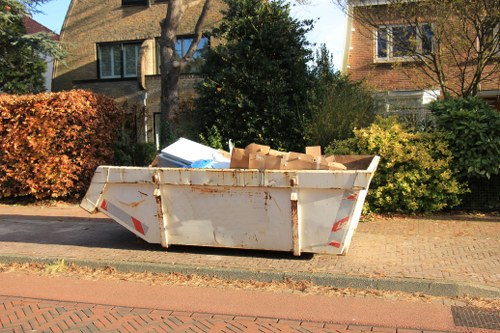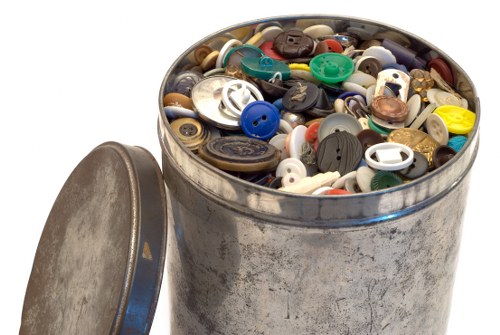Litter Clearance in Commercial Waste Collection
Understanding Litter Clearance

Litter clearance is a critical component of commercial waste collection that focuses on the efficient removal and management of waste from business premises. Effective litter clearance not only maintains a clean environment but also enhances the aesthetic appeal of commercial areas.
Businesses across various industries generate different types of waste, and implementing an effective litter clearance strategy is essential for sustainability and regulatory compliance. Proper waste management helps in reducing environmental impact and promotes a healthier workplace for employees.
Commercial waste collection encompasses the collection, transportation, and disposal of waste generated by businesses. Litter clearance specifically targets scattered waste items, ensuring that commercial spaces remain organized and free from debris.
Importance of Litter Clearance in Business Operations

Maintaining a clean business environment is crucial for several reasons. Firstly, it creates a positive impression on clients and visitors, showcasing the company's commitment to cleanliness and professionalism.
Secondly, effective litter clearance reduces the risk of accidents and health hazards in the workplace. Accumulated waste can lead to slips, trips, and other safety issues, which can be mitigated through regular and systematic waste management practices.
Additionally, proper waste management contributes to environmental sustainability by minimizing the negative impact of waste on the ecosystem. Businesses that prioritize litter clearance demonstrate their responsibility towards the community and the environment.
Strategies for Effective Litter Clearance

Implementing an effective litter clearance plan involves several strategies that businesses can adopt to optimize their waste management processes.
Regular Waste Collection Schedules
Establishing regular waste collection schedules ensures that waste is removed promptly before it accumulates. This prevents overflow and maintains a clean workspace.
Segregation of Waste
Separating different types of waste—such as recyclables, organic waste, and general trash—enhances the efficiency of the waste collection process and promotes recycling efforts.
Use of Appropriate Containers
Providing the right types of bins and containers for various waste streams facilitates easier waste segregation and disposal, leading to more effective litter clearance.
Technologies Enhancing Litter Clearance

Advancements in technology have significantly improved litter clearance methods in commercial waste collection.
Automated Waste Disposal Systems
Automated systems streamline the waste collection process by monitoring waste levels and optimizing pickup schedules, reducing the need for manual intervention.
GPS Tracking
GPS technology allows waste collection companies to track their vehicles in real-time, ensuring timely and efficient litter clearance across multiple locations.
Smart Bins
Smart bins equipped with sensors alert waste collectors when they are full, enabling prompt waste removal and preventing overflow.
Environmental and Economic Benefits

Effective litter clearance in commercial waste collection offers numerous environmental and economic benefits.
- Environmental Protection: Reduces pollution and the strain on natural resources by promoting recycling and proper waste disposal.
- Cost Savings: Efficient waste management can lead to lower disposal costs and potential savings through recycling initiatives.
- Enhanced Reputation: Businesses that prioritize cleanliness and sustainability can strengthen their brand image and attract environmentally conscious customers.
Moreover, proper litter clearance contributes to compliance with local regulations and reduces the risk of fines and penalties associated with inadequate waste management practices.
Implementing a Successful Litter Clearance Program
To successfully implement a litter clearance program, businesses should follow these key steps:
- Assessment: Evaluate the current waste management practices and identify areas for improvement.
- Planning: Develop a comprehensive waste management plan that includes regular collection schedules, waste segregation, and recycling initiatives.
- Implementation: Deploy the necessary resources, such as appropriate containers and waste collection vehicles, to execute the plan effectively.
- Monitoring: Continuously monitor waste levels and collection efficiency to ensure the program's success.
- Education: Train employees on proper waste management practices to foster a culture of cleanliness and environmental responsibility.
Conclusion
Incorporating efficient litter clearance into commercial waste collection is essential for maintaining a clean, safe, and sustainable business environment. By adopting strategic waste management practices, leveraging advanced technologies, and fostering employee involvement, businesses can achieve significant environmental and economic benefits.
Investing in effective litter clearance not only enhances the operational efficiency of a business but also contributes to a positive societal impact, aligning with broader sustainability goals.
Contact us today to learn more about how our commercial waste collection services can help your business maintain a pristine and productive environment.